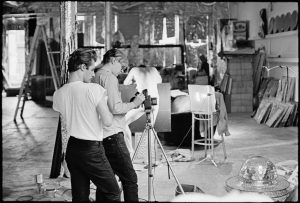The artist Vik Muniz on cubism, exploring the super-real, and embracing a future of autonomous digital imagery
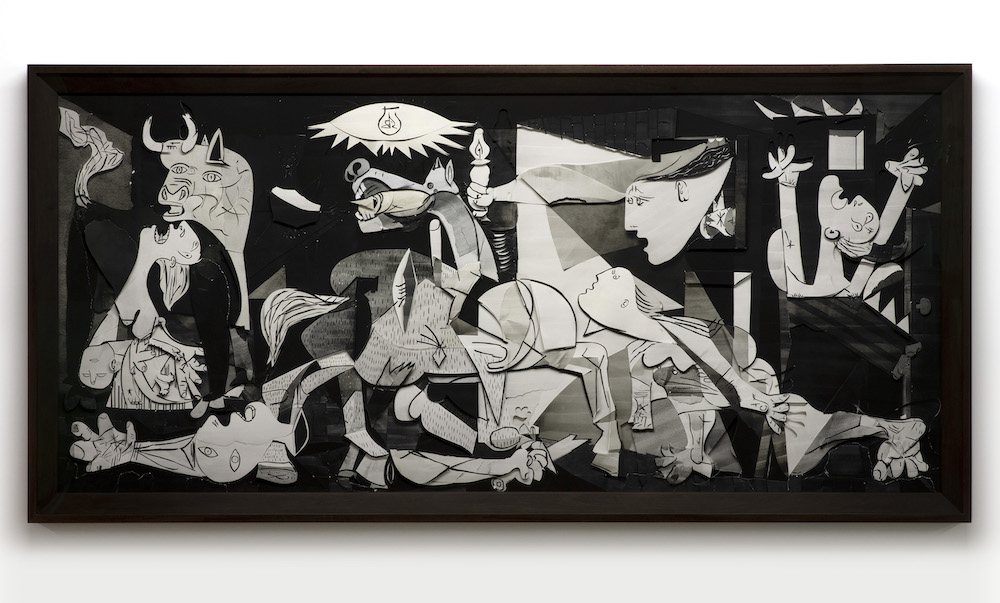
The acclaimed artist Vik Muniz has been toying with our perception of reality via the lens of art history for nearly three decades, and his latest show at Ben Brown Fine Arts is no exception, featuring intricately layered re-imaginings of classic artworks from the cubist movement that are something akin to a conceptual hall of mirrors, with each ingenious twist making us look once again at what we thought we already knew so well. The utterly entrancing FOTOCUBISMO features work from the artist’s renowned Surfaces series, and brilliantly exemplifies his unique style, consisting of countless photographed pieces of hand-crafted paper semi-collaged into three-dimensional versions of iconic works by the likes of Pablo Picasso and Georges Braque – presenting their now familiar, yet once radical, abstraction of the human form in a thoroughly modern context. As such, these latest works push viewers to explore what lies in the shadows and beneath the surface, dissecting each layer amidst myriad overlapping interventions.
Here, the artist speaks to Port about employing confusion to create discernment, and heralds a brave new world in which the untethered photographic image is free from any relationship to so-called reality.

When were you first attracted to the work of the cubists?
The first time I encountered the cubists was through reproductions in magazines. Initially, I did not understand the work at all. It was only when I started trying to figure out what I was doing with photography that I first understood that what I was trying to do with the medium went beyond representation of the world as it was, and that that was precisely what the cubists were also doing immediately after the invention of photography. When photography came about there was a hegemonic sense that the world could be simplified, and that pictures would stand for reality and would bring about the death of painting, but, of course, photography didn’t kill painting, it actually liberated it. Cubism was actually pushing towards re-humanizing the gaze from the photographic image, because there is so much more that you have to take into account in the work, such as memory, duration, and sensation. We are now very normalised to the photographic image – it’s a media that penetrates through our consciousness, both individual and collective, and gives us a false sense of experience. When I very first began thinking about what to do with photography, one thing that was always really poignant for me was the fact that I did not want to make images. I wanted to make things that mediated between the idea of representation and physical presence.
What drew you to explore these classic works in the way that you have, and towards re-making or re-sequencing them?
I try to produce images that contain the comfort of recognition, because when what you are looking at is something you think you have seen before – such as an icon or an archetype – then you bring your own emotional baggage to that encounter. If I come towards the piece feeling that I recognise it, I know that I can come closer, because the familiarity contains a kind of intimacy. But, in reality, there is no familiarity because there is no such thing as a still image, ever – everything is moving all the time; as you come towards an image, it changes. There is something very cinematic about the way in which you see more detail as your eye wanders around – and the important thing for me are the disturbances, which are distributed in such a way that you can’t concentrate on one thing or another. I’m not a painter. I’m not even a photographer, when it comes to mind. I’m somebody who tries to figure out the syntax and semiotics, and plays with them. I think we’re all pieces of a huge puzzle of holographic complexity, and working in three-dimensional objects, with this idea of something you feel you have seen before, means I can explore the idea of physical presence – because all these primal shapes have specific volume, and as you try to negotiate what you are seeing, you begin to see that it’s full of shadows and paradoxes.
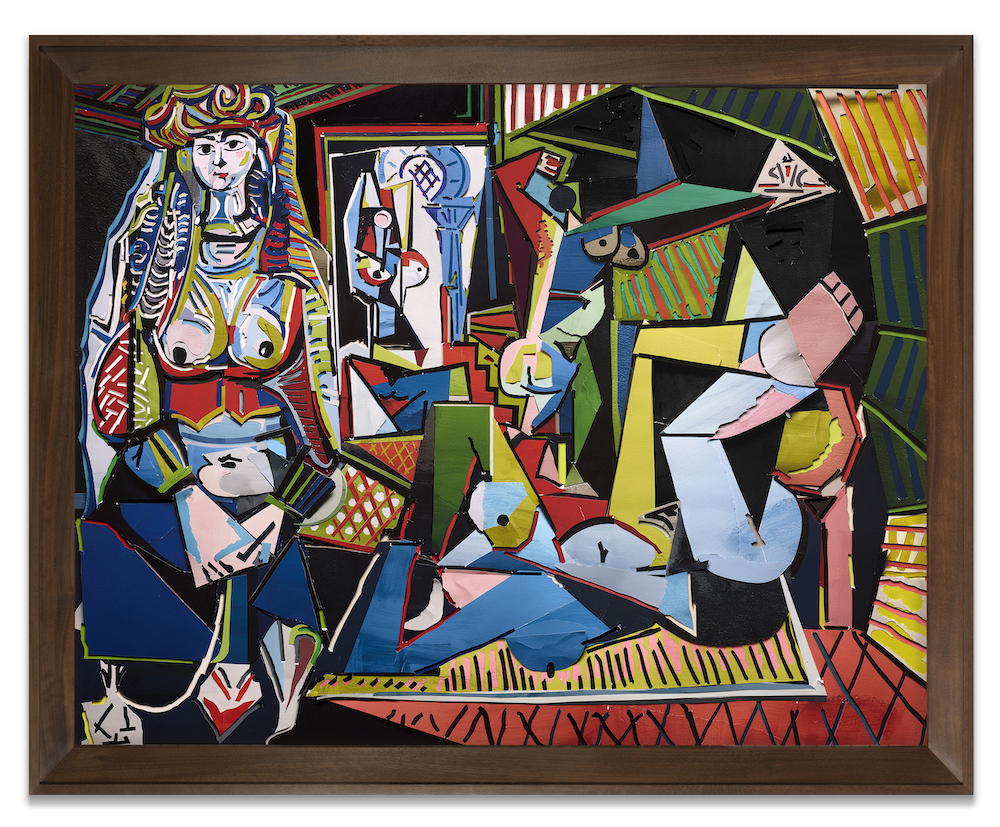
How does that notion of paradox and mediating between presence and representation play out in these works?
The idea of working with photographs of painted paper is interesting to me, because it is both something that is purely representational, and also not representational at all – because it is a photograph of painted paper; it’s not painted paper. It’s also interesting because the role of paper to diffuse information is bound to end in our lifetime. Images have become free and autonomous of physical support, so it is coded in their DNA to begin to have a looser relationship to the physical world and to reality, as we know it – and when you see something is on the edge of obsolescence, it is absolutely the time to try to understand it, because in order to understand what is coming next, you have to understand why you used it, and how you used it. I started doing this research into paper around abstract paintings mainly because I wanted to filter out any subjectivity, and cubism was the place to do that, because cubism was all about phenomenology – these guys were all still trying to grapple with reality, with the physical world or remnants or residues of it after the invention of photography, and trying to figure out how to better negotiate and explore reality with the richness and complexity that the subject deserves.
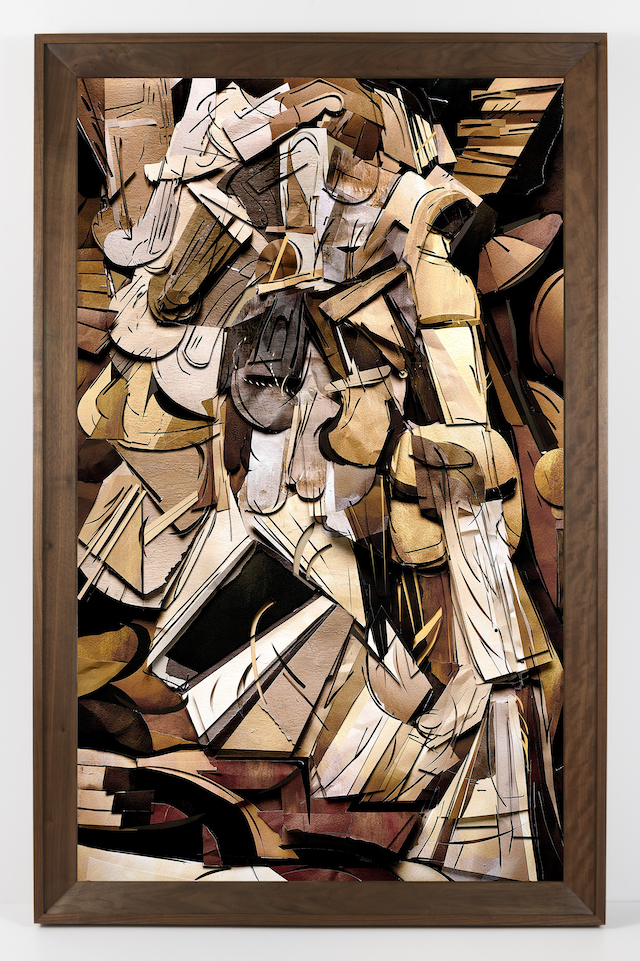
Do you think we are in a similar paradigm now, in terms of modes of representation radically shifting, as these painters were at the beginning of the 20th century?
Yes. The cubist painters were in that moment when photography was new, and not as specialised or ubiquitous as it is now. As such, a lot of what you see in the paintings at the beginning of the 20th century is works by people who actually lived in a world without the predominance of the photographic medium. We’re at a similar point, because we lived through the predominance of a photographic medium that was still dependent on a physical support, but now we don’t have that situation. There are probably two very strong changes in the way we understand the world, one is the world before and after the industrial revolution, and two is the world before and after the digital revolution – you can do anything you want in the digital world, because images no longer have to correspond to physical things or sensations. In the past, an image would connect to something that existed, or to somebody who lived, but it no longer needs to do that, and it could soon be absolutely autonomous. Once an image does not depend upon a physical support, the bond is ruptured. In the medium of photography, we came up with something so representative of reality that we have used it as a repository of our memories and collective history for almost 200 years, and we trusted these things. That has now become utterly obsolete. It’s like our entire lives are on magnetic cassette tapes, but we don’t have a place to play them.
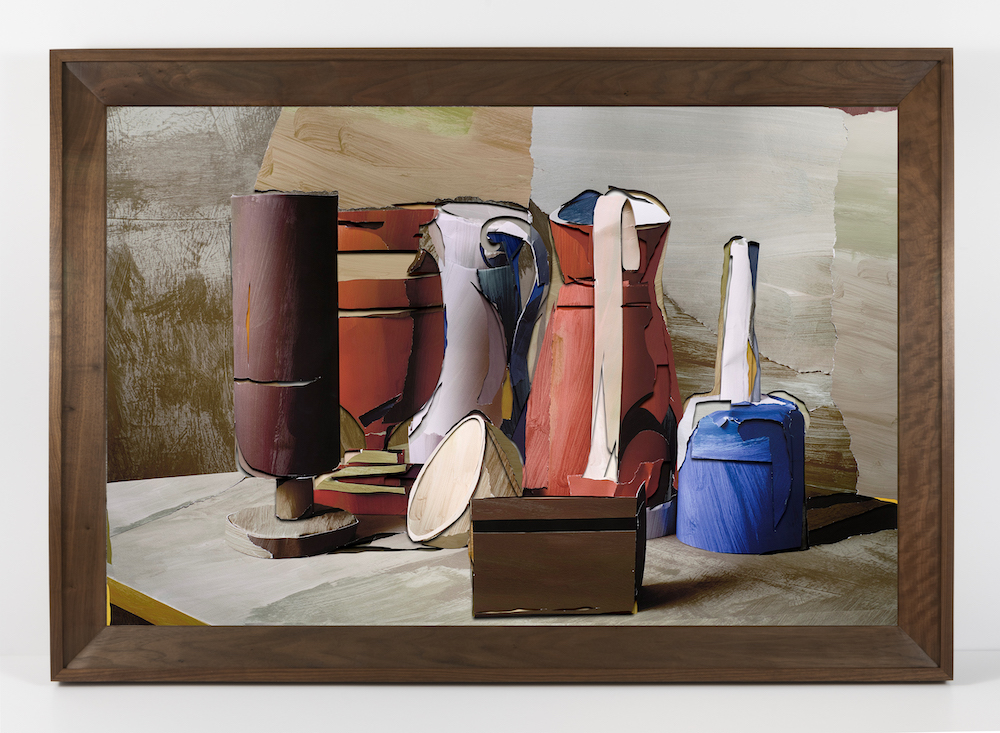
What do you believe to be the role of the artist in society?
The role of the artist has never really changed much. It is the role of a person who is always updating, reviewing and promoting alternative modes on the construction of reality. As an artist, you are always trying to figure out how to create an experience of discernment, and to create confusion really promotes discernment. If you look at these paintings, you can see shadows and layers in the work, and they change entirely depending on where you view them from – what I actually love, most of all, is that these paintings won’t work on a computer screen, or the screen of a phone, because they are irreducible. However, if you are in front of them, they are confusing enough that you are going to start to wonder what it is you are looking at. I think that is the role or utility of contemporary art – to take people out of their comfort zone. If you are walking on the sidewalk, and an artist has placed a giant rock obstructing your way, then the simple fact that you have to cross the road means that the rock is already doing its job as a contemporary art object, because you had to confront it.
FOTOCUBISMO exhibits at Ben Brown Fine Arts until May 26




